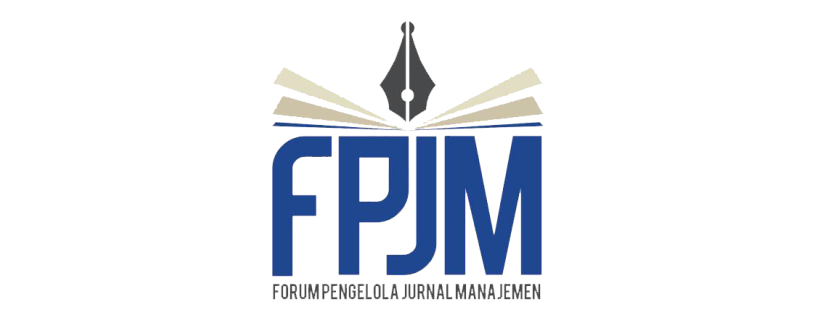Pengaruh e-CRM terhadap Kualitas Hubungan dan Hasil dengan Atribut Layanan dan Pemulihan Layanan sebagai Variabel Mediasi
DOI:
https://doi.org/10.26905/jmdk.v9i1.5287Keywords:
e-CRM, Relationship Quality and Result, Service Attribute, Service RecoveryAbstract
This research is expected to find out more about the effect of e-Customer Relationship Management (e-CRM) on relationship quality and outcomes by using service attributes and service recovery as a mediating variable for customers of PT BCA Tbk, The Main Branch of Malang. This study uses a quantitative approach by explanatory research. An online survey method which was conducted on 132 priority customer of PT BCA Tbk The Main Branch of Malang. The analytical method uses SEM-PLS. This research shows that the quality of the relationship & results is significantly influenced by e-CRM, and is also significantly and directly influenced by service attributes and service recovery. Each service attributes and service recovery were found to act as mediators in this study, namely partially mediating e-CRM on relationship quality and results. The results also convey that e-CRM can directly and significantly influence each service attribute and service recovery. It's miles hoped this research can assist practitioners in improving the relationship quality and outcomes of the company and customer relationships with e-CRM, through service attributes and service recovery.
Downloads
References
Al-Dmour, H. H., Algharabat, R. S., Khawaja, R., & Al-Dmour, R. H. (2019). Investigating the impact of ECRM success factors on business performance: Jordanian commercial banks. Asia Pacific Journal of Marketing and Logistics, 31(1), 105-127.
Al-Eisa, A. S., & Alhemoud, A. M. (2009). Using a multiple-attribute approach for measuring customer satisfaction with retail banking services in Kuwait. International Journal of Bank Marketing, 7(4), 294–314.
Alim, S., & Ozuem, W. (2014). The Influences of e-CRM on customer satisfaction and loyalty in the UK mobile industry. Journal of Applied Business and Finance Researches, 3(2), 47-54.
Alem Mohammad, A., bin Rashid, B., & bin Tahir, S. (2013). Assessing the influence of customer relationship management (CRM) dimensions on organization performance. Journal of Hospitality and Tourism Technology, 4(3), 228–247.
Amin, M. (2016). Internet banking service quality and its implication on e-customer satisfaction and e-customer loyalty. International Journal of Bank Marketing, 34(3), 280-306.
Bahri-Ammari, N., & Mraidi, S. (2016). Loyalty strategy and social-crm: How consumers adhere to the tools. Competitive Social Media Marketing Strategies. Hershey, PA: IGI Global.
Bitutu Muro, M., Obara Magutu, P., & Nyankora Getembe, K. (2013). The strategic benefits and challenges in the use of customer relationship management systems among commercial banks in Kenya. European Scientific Journal, 9(13), 1857–7881.
Brun, I., Rajaobelina, L., & Line, R. (2014). Online relationship quality: Scale development and initial testing. International Journal of Bank Marketing, 32(1), 5–27.
Cambra-Fierro, J., Melero, I., & Sese, F. J. (2015). Managing complaints to improve customer profitability. Journal of Retailing, 91(1), 109–124.
Chin, W. W. (1998). The Partial Least Squares Aproach to Structural Equation Modeling. Modern Methods for Business Research, 295-336.
Dubey, N. K., & Sangle, P. (2019). Customer perception of CRM implementation in banking context: Scale development and validation. Journal of Advances in Management Research, 16(1), 38–63.
Eriksson, K. and Hermansson, C. (2019). How relationship attributes affect bank customers’ saving. International Journal of Bank Marketing, 37(1), 156-170.
Farooqi, M. R., & Kumari, S. (2014). Effectiveness of e-CRM in commercial banks: A customer perspective. Srusti Management Review, 8(1), 15-20.
Forbes, L., S. Kelley, & D. Hoffman. (2005). Typologies of e-commerce retail failures and recovery strategies. Journal of Services Marketing, 19(5), 280– 292.
Garepasha, A., Aali, S., Zendeh, A. B., & Iranzadeh, S. (2020). Dynamics of online relationship marketing: Relationship quality and customer loyalty in Iranian banks. Revista Brasileira de Gestao de Negocios, 22(1), 140–162.
Herzberg, F., Mausner, B., & S. B. (1959). The motivation to work. Wiley.
Holloway, B. B., Wang, S., & Beatty, S. E. (2009). Betrayal? Relationship quality implications in service recovery. Journal of Services Marketing, 23(6), 385–396.
Islam, R., Ahmed, S., & Razak, D. A. (2015). Identifying the gaps between customer expectations and perceptions on service quality dimensions of Islamic banks in Malaysia. International Journal of Quality and Service Sciences, 7(4), 424–441.
Johnston, R., & Michel, S. (2008). Three outcomes of service recovery: Customer recovery, process recovery and employee recovery. International Journal of Operations and Production Management, 28(1), 79–99.
Kang, B., Oh, S., & Sivadas, E. (2013). Beyond relationship quality: Examining relationship management effectiveness. Journal of Marketing Theory and Practice, 21(3), 273–288.
Kenny, D. A. (2008). Reflections on mediation. Organizational Research Methods, 11(2), 353–358.
Khodakarami, F., & Chan, Y. (2011). Evaluating the success of customer relationship management system. Proceedings of the European Conference on Information Management & Evaluation, 253-266.
Komunda, M., & Osarenkhoe, A. (2012). Remedy or cure for service failure? Business Process Management Journal, 18(1), 82–103.
Kotler, P., & Armstrong, G. (2012). Prinsip-prinsip Pemasaran (1st ed.). Jakarta: Erlangga.
Kumar, J., & Kumar, V. (2020). Drivers of brand community engagement. Journal of Retailing and Consumer Services, 54(3), 1-12.
Lai, S., & Hsiao, Y. (2009). The mediating influence of service quality satisfaction and information trust on the e-CRM process model: An empirical bank marketing research. The Journal of American Academy of Business, 15(1).
Liu, T.-C., & Wu, L.-W. (2007). Customer retention and cross-buying in the banking industry: An integration of service attributes, satisfaction and trust. Journal of Financial Services Marketing, 12(2), 132–145.
Mathew, S., Jose, A., G, R., & Chacko, D. P. (2020). Examining the relationship between e-service recovery quality and e-service recovery satisfaction moderated by perceived justice in the banking context. Benchmarking, 27(6), 1951–1980.
Najafi, A., Rezaei, S., & Rodi, A. D. (2017). The effect of electronic customer relationship management on customer relationship quality: Evidence from Mellat Bank of Arak City. International Journal of Economic Perspectives, 11(3), 539–548.
Olupot, C., & Mayoka, K. G. (2013). The electronic journal on information systems in developing countries a framework for the adoption of electronic customer relationship management information systems in uganda. In EJISDC, 58.
Pan, S. L., & Lee, J.-N. (2003). Using e-CRM for a unified view of the customer. Communications of the ACM, 46(4), 95–99.
Preacher, K. J., & Hayes, A. F. (2004). SPSS and SAS procedures for estimating indirect effects in simple mediation models. Behavior Research Methods, Instruments, & Computers, 36(4), 717–731.
Reis, J., Amorim, M., & Melão, N. (2019). Multichannel service failure and recovery in a O2O era: A qualitative multi-method research in the banking services industry. International Journal of Production Economics, 215, 24–33.
Robinson, L., Neeley, S. E., & Williamson, K. (2011). Implementing service recovery through customer relationship management: Identifying the antecedents. Journal of Services Marketing, 25(2), 90–100.
Roloff, M. E., Miller, G. R., & Roloff, M. E. (Ed). (1987). Interpersonal Processes: New Directions in Communication Research. Sage.
Shanab, E. A., & Anagreh, L. (2015). Impact of electronic customer relationship management in banking sector. International Journal of Electronic Customer Relationship Management, 9(4), 254-271.
Sivaraks, P., Krairit, D., & Tang, J. C. S. (2011). Effects of e-CRM on customer–bank relatonship quality and outcomes: The case of Thailand. The Journal of High Technology Management Research, 22(2), 141–157.
Smith, J. B. (1998). Buyer-Seller relationships: Similarity, relationship management, and quality. Psychology & Marketing, 15(1), 3-12.
Soltani, Z., & Navimipour, N. J. (2016). Customer relationship management mechanisms: A systematic review of the state of the art literature and recommendations for future research. Computers in Human Behavior, 61, 667–688.
Song, B., Lee, C., & Park, Y. (2013). Assessing the risks of service failures based on ripple effects: A Bayesian network approach. International Journal of Production Economics, 141(2), 493–504.
Sujitha K. A. & Johnson B. (2017). Electronic Customer Relationship Management (e-CRM) techniques for effective banking in Research Methodology and Statistical Analysis using SPSS. New Delhi: Excell India Publisher
Tax, S. S., Brown, S. W., & Chandrashekaran, M. (1998). Customer evaluations of service complaint experiences: Implications for relationship marketing. Journal of Marketing, 62(2), 60-76.
Wahab, S., Jusoff, K., Abed, K., Al, M., Mohd, N. A., Suffian, A., & Zahari, M. (2011). The influence of usability and enjoyment on electronic customer relationship management performance in Jordan mobile communication services. African Journal of Business Management, 5(1), 128–134.
Wang, K. Y., Hsu, L. C., & Chih, W. H. (2014). Retaining customers after service failure recoveries: A contingency model. Managing Service Quality, 24(4), 318–338.
Yang, Y., Lee, P. K. C., & Cheng, T. C. E. (2015). Operational improvement competence and service recovery performance: The moderating effects of role stress and job resources. International Journal of Production Economics, 164, 134–145.
Yu, X., Nguyen, B., Han, S. H., Chen, C. H. S., & Li, F. (2015). Electronic CRM and perceptions of unfairness. Information Technology and Management, 16(4), 351–362.
Downloads
Published
Issue
Section
License
Authors who publish with this journal agree to the following terms:
(1)Â Copyright of the published articles will be transferred to the journal as the publisher of the manuscripts. Therefore, the author confirms that the copyright has been managed by the journal.
(2) Publisher of Jurnal Penelitian is University of Merdeka Malang.
(3) The copyright follows Creative Commons Attribution–ShareAlike License (CC BY SA): This license allows to Share — copy and redistribute the material in any medium or format, Adapt — remix, transform, and build upon the material, for any purpose, even commercially.












